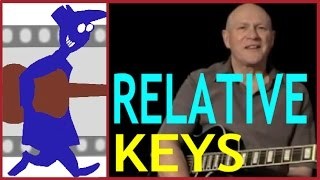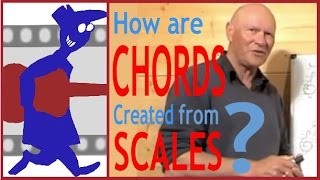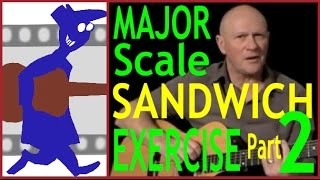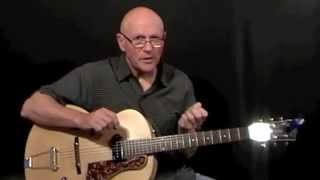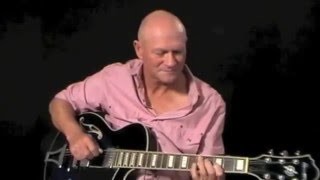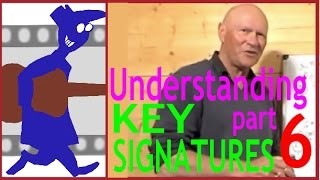Open Shuffle Patterns in Other Keys
Published on 26 January 2016
For more information from the source site of this video please visit: http://secretguitarteacher.com/youtube/advanced/rock-n-roll/2wwtzhSlNS0/84209958-open-shuffle-patterns-in-other-keys.php
This is a sample lesson from the advanced section of the Secret Guitar Teacher website (see link above). It comes from the Rock 'n' Roll Rudiments Course.
Although part of a course for advanced guitarists, on its own this lesson is probably ok to follow for less-experienced guitarists who are keen to learn to play 50s and 60s style Rock n Roll (Gene Vincent, Eddie Cochran, Chuck Berry etc...).
Hope you enjoy it -- comments and questions welcome.
Here's the abridged transcript:
In the last lesson we looked at how with just one pattern we could play through a 12-bar in A using open shuffle patterns. In this lesson we'll show you how we adapt exactly the same basic principle to play in the commonly used keys of E, C, D and G major.
Now, if you have worked through any of our Blues courses, you will be familiar with the 12-bar blues in the key of E. In this key we use the chords E ...
A and B or B7.
Now we have already covered the E shuffle pattern and the A shuffle pattern in the last lesson, so lets remind you of how we deal with the B chord. Here's our B major scale. And right away you can see why playing an added 6th shuffle pattern is a bit of a problem with this chord. We can't easily add the 6th note by replacing the 5th in the way we have done with the E and A chords.
There's a couple of ways round this problem, but here's the one that's easiest to play. First we extend the scale downwards...by thinking of the Key note B at the second fret on the A string not as note 1 but as note 8 in the scale and working back down to locate notes 6 and 5 in the lower octave.
Because we are using the fifth and sixth notes from the octave below the root note we refer to this as an inverted shuffle pattern.
Remember we are always playing the root and fifth together first then adding the sixth like this to get the 'Rocking' effect of the rhythm.
OK so lets fit that into a Rock and Roll 12-bar in E nice and slow to begin with. Start with four bars of E.
Up to 2 bars of A and back to two bars of E again then 1 bar of B, one of A and two of E.
The shuffle pattern for the C chord can be played exactly like the B one by moving it up a fret higher if you want, like this. But here is my preferred way of playing it
Not everyone finds this easy. And there are several options you can try out to get the best possible sound in the easiest way.
The purest sound is got by muting out the third note...But, if you find this difficult, don't hesitate to include it in the chord, because, if that fourth string sounds at all, we don't really want to hear it as an open D...With your finger on the second fret, at least if it sounds, its effect on the chord is minimal and not discordant.
Now in a 12 bar in C we would want to move up to F next: You can see that this is a basic F chord shape with the sixth note of the scale added using the pinky like this:
The two strings you have to watch are the top two:
Two possibilities for the G chord. I usually find that it's simplest just to slide the F chord up a couple of frets like this: But you can get a bassier sound, which is often going to sound better, by working with the basic open G shape like this:
So these shapes may take a bit of sorting out and more practice than those we have used so far. Try and quickly home in on one way of playing each chord for now and practice changing from one chord to the next as quickly and smoothly as possible . Then start work against the backing tracks. Again we have made these at three different tempo settings.
Here's a demo of a 12-bar in C at 160 Bpm. If you can follow this, you're definitely ready to Rock N Roll.
On the SecretGuitarTeacher site, you will find three speed backing tracks in all these keys to really help you practice them with a real sense of Rock N Roll timing. You will also find tab printouts for all he 12-bar chord sequences.
Now that about wraps it up for open shuffle patterns for the time being, but this is not the end of the story, because, qute often you will find yourself having to play in keys that require using movable shuffle patterns. Johnny B Goode for example was originally played in Bb major.
So that's going to be what we tackle in the next lesson. Once you have worked through that, you should be able to provide a pretty decent Rock n Roll accompaniement to just about anything in any key!
So I look forward to seeing you in that lesson!
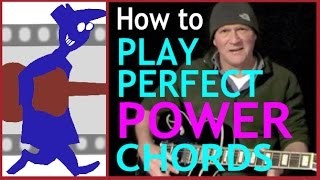 How To Play Perfect Power Chords
How To Play Perfect Power Chords
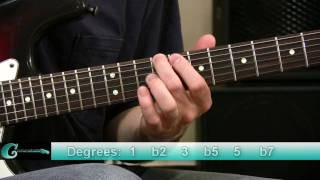 Understanding Hexatonic Scales
Understanding Hexatonic Scales
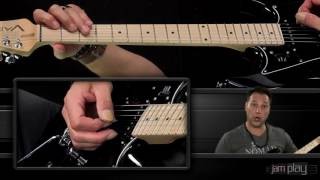 Build a Solo Using Arpeggios
Build a Solo Using Arpeggios
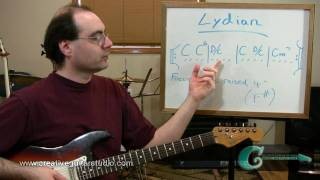 Lydian Mode: Part 2 - Modal Progressions
Lydian Mode: Part 2 - Modal Progressions
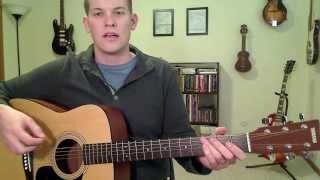 The "Each Finger First" Chord-Changing Exercise
The "Each Finger First" Chord-Changing Exercise
 Guitar Lesson: Basic Color Chords
Guitar Lesson: Basic Color Chords
 How to Change Chord shapes Quickly
How to Change Chord shapes Quickly
 3 Beginner Fingerstyle Riff Exercises - Guitar Les...
3 Beginner Fingerstyle Riff Exercises - Guitar Les...
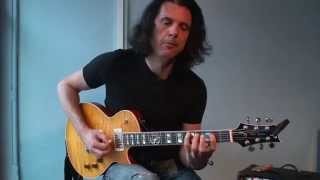 Guitar Lesson: Alex Skolnick - Alternate picking (...
Guitar Lesson: Alex Skolnick - Alternate picking (...
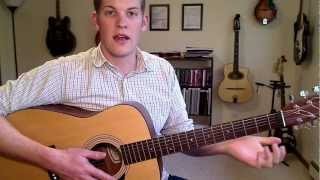 How to Embellish an A Chord
How to Embellish an A Chord
